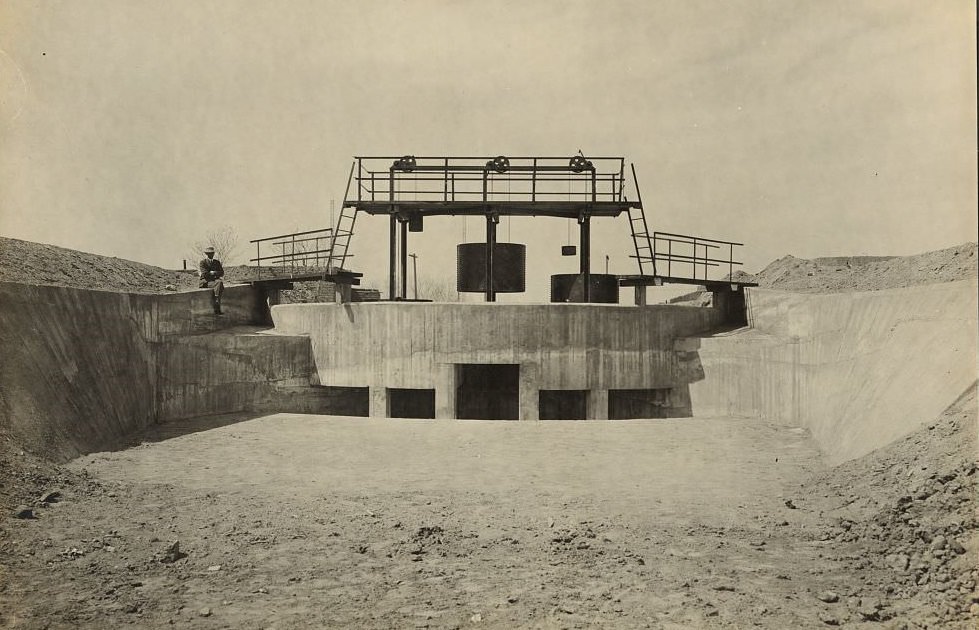
Newly designed canal structure in Franklin Canal, El Paso Valley, 1900s (3/74)


Don't have an account? Register
Enter your account data and we will send you a link to reset your password.
To use social login you have to agree with the storage and handling of your data by this website. Privacy Policy
AcceptHere you'll find all collections you've created before.
Were is it located?
IN A THUMBNAIL:
The Franklin Canal is an irrigation canal in the Upper Rio Grande Valley near El Paso, Texas. The canal acquires water from the Rio Grande via the American Canal. The canal is 28.4 miles (45.7 km) long with a capacity of 325 cubic feet per second. Though the canal was privately constructed in 1889, it was acquired by the US Bureau of Reclamation in 1912. It is part of a large canal network in the Upper Rio Grande Valley. It was made a Historic Civil Engineering Landmark of Texas in 1976
———
The Franklin Canal, started in 1889, was the first large-scale, complex irrigation project in West Texas. The canal, a private undertaking of the El Paso Irrigation Co. (nee The Franklin Irrigation Company), was completed in 1891 at a cost of $150,000.
A masonry wing dam extending about 300′ diagonally into the Rio Grande diverts water into the heading of the Franklin Canal, about a mile northwest of El Paso. The 31-mile-long canal begins about 30′ wide but decreases to 15′ at Fabens, where it returns to the Rio Grande. When completed, it had a capacity of 175 cubic feet per water per second and could irrigate about 1,400 acres at normal river flow. The canal had a steeper grade than necessary, which required concrete drop structures at several locations to control the velocity of the water. The novel design of the drop structures consisted of counter-balanced cylindrical gates that could be adjusted to allow a discharge of the proper velocity to prevent erosion or silting of the channel. (Source: Arthur Powell Davis, Irrigation Works Constructed by the United States Government (New York: John Wiley & Sons, Inc., 1917).
In 1912, the U.S. Reclamation Service purchased the canal, and it became a key part of the Rio Grande Project. The canal was extensively renovated and enlarged between 1912 and 1916. The work included repairing the diversion dam, enlarging the heading of the canal, and lining a portion of the channel with concrete. When completed, the Franklin Canal became one of the projects primary canals, capable of irrigating 40,000 acres.
Capable, but despite designer and investors’ best hopes, the erratic flow of the Rio Grande meant it would water only 3,000 acres in the few years following. Compound arid West Texas’ capricious weather with the fact the Rio Grande’s waters must be shared with Mexico: in 1935, Congress commissioned diversionary projects to measure and allow Mexico’s share to pass through to the Acequia Madre, while diverting everything else into the American Canal, a two-mile stretch that now feeds the Franklin Canal — a largely successful solution to the problem of dividing the waters. Enough said about my swimming pool.